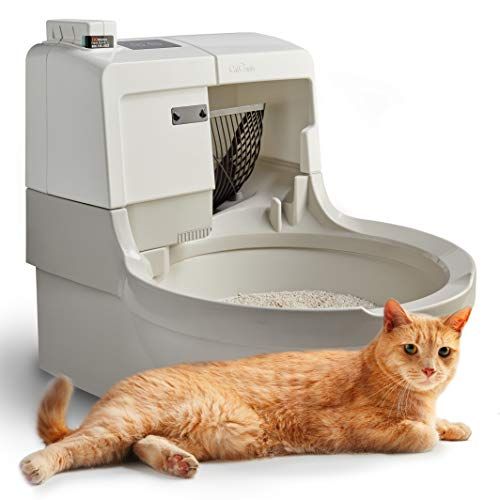
(If the sensor doesn’t know to wait until a cat has left the pan, it’ll mistakenly start scooping while the cat is still in it, which could lead to injury.) Some make flushing sounds and others bang when the scoop is operating.Īnd no automatic litter box works with kittens or cats that weigh less than 5 pounds because they’re too small to set off the sensors that tell the litter box when to scoop and when not to scoop. For example, the CatGenie takes 30 minutes to flush away messes, and the PetSafe Simply Clean needs an hour to scoop out excrement.Īutomatic cat litter boxes are also loud, and may startle some cats to the point they avoid the machine altogether. Some automatic litter boxes also take a long time to scoop, which can annoy cats who like pristine litter boxes and may go elsewhere in the home while they wait for the litter box to do its job.

And the PetSafe Simply Clean failed several times when clumped urine got caught on the conveyor belt, bottlenecking the travel route and spilling dirty litter onto the floor. The Litter-Robot III Open Air, for example, jammed when we loaded too much litter or the wrong type of litter, and it malfunctioned when cat waste blocked the sensor (it mistakenly perceived the bin as being full). The main task of an automatic cat litter box is to scoop out pet waste, and the models we tested routinely failed at the task. Most of the automatic litter boxes we tested don’t live up to the hype.
Best automatic litter box multiple cats full#
(The ScoopFree Ultra’s rake system required just 1 minute, 10 seconds, while the Simply Clean’s conveyor belt took a full hour to scoop and sift litter into its waste bin.) In our tests the sifting process took 2.5 minutes, making the Litter-Robot the second-fastest of the automatic litter boxes we tested. The globe didn’t spill litter outside of the box like the design of the PetSafe Simply Clean did, nor did it stir the urine back into the litter bed like the PetSafe ScoopFree Ultra did. In our tests it removed more litter waste than the other models we tried because the spinning action helped remove gunky litter from the sides and base of the litter bed, whereas other models could sometimes miss those spots. The Litter-Robot’s globe rotates first counterclockwise and then clockwise to sift the litter bed and dump dirty litter into the waste receptacle. Installation process: I followed the manufacturer's instructions to set up each litter box, and I noted any challenges during the process.ĭespite its drawbacks, the Litter-Robot was one of the better automatic litter boxes in our test group at doing what it’s meant to do: scoop litter.Size: I reviewed the dimensions of both the litter boxes and the litter trays to see if they were on a par with those of our favorite traditional litter boxes.Ease of cleaning: I checked the litter box mechanisms to see how gunky they got after use, and I noted how easy they were to clean.Waste bin: I measured how much waste each trapper held, calculated how long it would take to fill, and compared that against the emptying recommendations the manufacturer specified.Those that measured at or below 50 decibels, the same level as a household conversation, are less likely to scare a cat or annoy a pet owner. Noise level: I sat a foot away from each litter box and used the smartphone app dB Volume to record how loud each model was when it activated.Scooping and processing time: I soiled each litter box with our stand-ins for cat pee and poop (¼ cup of water and halfway-melted chocolate, respectively) and assessed how well and how quickly the litter box scooped out the mess.“I usually recommend against automatic litter boxes because if anything goes wrong with them, it can scare the bejesus out of them and they’re not going to want to use it ever again,” said Mary Molloy, ASPCA animal behavior counselor and owner of pet-training company Nirvana Tails in New York City. While it was quieter than other models, some experts said they believed that the raking motion or any mechanical sound could deter some cats. The PetSafe ScoopFree Ultra was one of the quietest machines we tested, measuring about 50 decibels (around the volume of a household conversation) when scooping away waste.

And it got even louder when it scooped, with the arm making a banging noise as it shook off loose litter granules from the clumped waste.

The CatGenie was the loudest litter box we tried: In our tests it loudly flushed water when clearing out the waste, an effect that could scare cats that are already skittish. Some cats (and people) may be put off by how loud automatic litter boxes can be-and if a cat has a negative association with a litter box, it might not use the box.


 0 kommentar(er)
0 kommentar(er)
